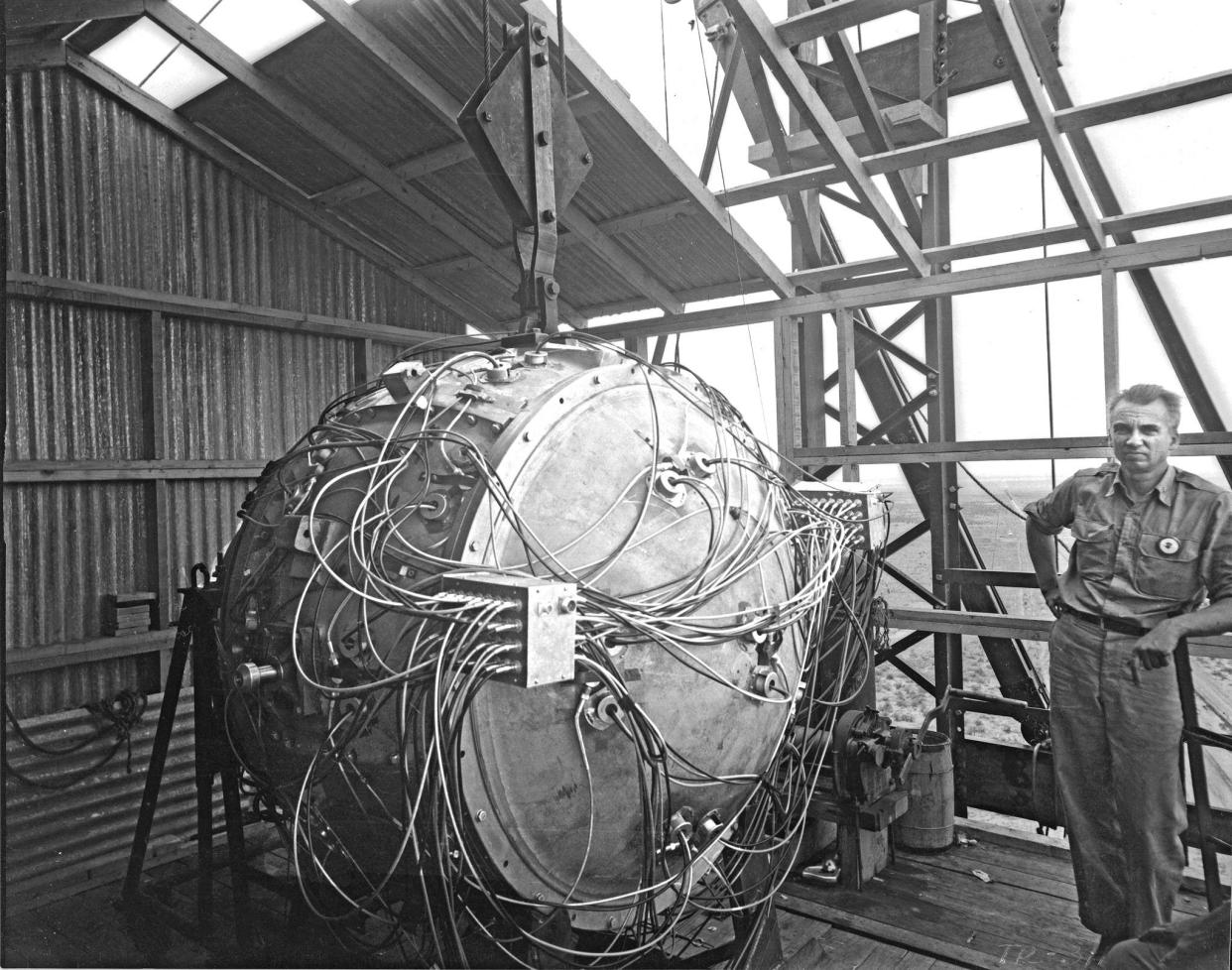An American physicist stands next to the world's first atomic bomb

On July 16, 1945 at exactly 5:29:45 a.m., the world entered the unprecedented atomic age with the successful testing of the most powerful weapon known to man.
"Gadget," the first atomic bomb, was born out of the Einstein-inspired Manhattan Project, and was detonated in the desert near Alamogordo, New Mexico.
Overseeing the project was US Brigadier-General Leslie Groves and Los Alamos director and American physicist Robert Oppenheimer.
Designed and launched under Oppenheimer's chosen codename "Trinity" — inspired by a poem by John Donne — the original $6,ooo program budget skyrocketed to a cool $2 billion after Einstein raised multiple concerns that the Nazi's were close to perfecting their own game-changing weapon.

US Department of Energy
The explosion vaporized the steel tower, sent a massive shockwave across the desert sand, and produced a mushroom cloud soaring 40,000 feet into the air, according to the Department of Energy.
Immediately after the blast, Oppenheimer reportedly exclaimed, "it worked!"
On August 6, 1945, the US dropped a 5-ton atomic bomb on the Japanese city of Hiroshima. The blast killed 80,000 people immediately and leveled four square miles of the city.
Related: Look back at the effects of the atomic bomb dropped on Hiroshima:
Three days later, the US dropped another bomb on Japan's Nagasaki, killing about 40,000 people instantly; thousands more would die of radiation poisoning.
Eight days later, Japan informally surrendered to the Allied forces, effectively ending World War II.
NOW WATCH: Animated map shows every nuclear-bomb explosion in history
See Also:
An unsettling photo of a US physicist cheerfully holding the 'Fat Man' atomic bomb's core
The moment the US deployed the most powerful weapon known to man
SEE ALSO: An unsettling photo of a US physicist cheerfully holding the 'Fat Man' atomic bomb's core
